Space

Dec 18th, 2025 - Reading time 4 minutes In 2004, astronomers spotted a planet-like object orbiting Fomalhaut, one of the brightest stars in the night sky. With further observations, however, it started to look more like a dust cloud—a decidedly less exciting outcome. Astronomers have now made an unexpected second observation around the same star: an apparent collision of two gigantic planetesimals—a decidedly incredible and important finding. Paul Kalas , who discovered the ex-exoplanet, has been ... [Read More]
Source: gizmodo.com

Dec 18th, 2025 - Follow Earth on Google Astronomers just discovered the oldest supernova to date. Named GRB 250314A, this ancient star exploded at a time when the universe was still finding its footing. Not long after the first galaxies lit up the dark, something massive collapsed, exploded, and sent its light racing across space for billions of years until it finally reached us. That light didn't arrive in a neat, simple package. It appeared first as a short, violent burst, then later as a slower, swelling ... [Read More]
Source: earth.com

Dec 18th, 2025 - It's quick and easy to access Live Science Plus, simply enter your email below. We'll send you a confirmation and sign you up for our daily newsletter, keeping you up to date with the latest science news. Facebook X Whatsapp Reddit Flipboard Join the conversation Add us as a preferred source on Google Newsletter Subscribe to our newsletter A NASA spacecraft designed to hunt for signs of extraterrestrial life has turned its lens toward comet 3I/ATLAS — but not for the reason you might ... [Read More]
Source: livescience.com
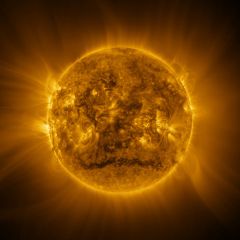
Dec 18th, 2025 - 2025 was a big year for astronomy, marked by major technological milestones and rare celestial events. We got our first look at images from the Vera C. Rubin Observatory, which will forever change how we monitor the night sky. The unexpected arrival of 3I/ATLAS — only the third interstellar object ever detected — turned an armada of telescopes and instruments in its direction. And as the Sun reached the peak of its 11-year cycle of activity, dedicated solar missions seized the ... [Read More]
Source: astronomy.com

Dec 18th, 2025 - Astronomers are scratching their heads at the odd chemistry, which hints at soot clouds and possibly diamond formation deep inside. Astronomers using NASA's James Webb Space Telescope have found an exoplanet that is a bit out of the ordinary. The team found a Jupiter-mass world stretched into a lemony shape by a nearby pulsar, wrapped in an atmosphere dominated not by water vapor or methane, but by molecular carbon. The object, coined PSR J2322-2650b, circles its dead-star host in a blistering ... [Read More]
Source: zmescience.com
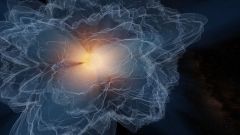
Dec 18th, 2025 - It's quick and easy to access Live Science Plus, simply enter your email below. We'll send you a confirmation and sign you up for our daily newsletter, keeping you up to date with the latest science news. Facebook X Whatsapp Reddit Flipboard Join the conversation Add us as a preferred source on Google Newsletter Subscribe to our newsletter For the first time, scientists have created detailed, 2D maps of the sun's outermost atmosphere. This feat was accomplished using data from NASA 's Parker ... [Read More]
Source: livescience.com

Dec 18th, 2025 - For two decades, astronomers have wondered how supermassive black holes could exist less than a billion years after the Big Bang. They knew that the processes inside normal stars simply couldn't create such objects within that time frame. But if so-called "monster stars," those with masses between 1,000 and 10,000 times that of our Sun existed, that would solve the mystery. Recently, an international team of scientists using the James Webb Space ... [Read More]
Source: astronomy.com
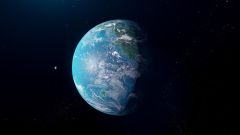
Dec 18th, 2025 - When we talk about "Earth-like" worlds, it is tempting to picture blue oceans and white clouds and stop there. But the bigger mystery is what happens much earlier, when a newborn solar system is still just a swirling disk of gas, dust, and tiny rocks. In that chaotic stage, small differences can steer a planet toward becoming a mostly rocky world like Earth or something very different. A new study suggests one of those differences may be surprisingly common, and it may begin with a dramatic ... [Read More]
Source: universal-sci.com

Dec 18th, 2025 - NEW YORK (AP) — NASA's Hubble Space Telescope got a rare look at the aftermath of two cosmic collisions — and helped scientists solve a decades-old mystery. Many years ago, scientists saw a dense, bright spot near a young star called Fomalhaut. They thought it could be a planet and continued to track it. But in 2023, Hubble's pictures revealed something strange. The bright spot had vanished — and a new one had appeared — a sign that it wasn't a planet after all. ... [Read More]
Source: apnews.com

Dec 18th, 2025 - It's quick and easy to access Live Science Plus, simply enter your email below. We'll send you a confirmation and sign you up for our daily newsletter, keeping you up to date with the latest science news. Facebook X Whatsapp Reddit Flipboard Join the conversation Add us as a preferred source on Google Newsletter Subscribe to our newsletter Roughly 4.5 million years ago, the sun passed remarkably close to two intensely bright stars whose radiation flooded nearby space — and the encounter ... [Read More]
Source: livescience.com

Dec 17th, 2025 - NASA has lost contact with MAVEN, a spacecraft that launched in 2013 and began orbiting Mars about 10 months later, remaining there for over a decade. According to , it was working normally before orbiting around the red planet, and around December 6 when it emerged, there was no signal between the craft and NASA's Deep Space Network. The appropriate teams are investigating, and continue to do so, but there has been no successful reconnection as of yet. According to recent analysis, after ... [Read More]
Source: bgr.com

Dec 17th, 2025 - It's quick and easy to access Live Science Plus, simply enter your email below. We'll send you a confirmation and sign you up for our daily newsletter, keeping you up to date with the latest science news. Facebook X Whatsapp Reddit Flipboard Join the conversation Add us as a preferred source on Google Newsletter Subscribe to our newsletter A mysterious, spider-like structure lurking on Jupiter's fourth-largest moon, Europa, may finally have a proper explanation nearly 30 years after it was ... [Read More]
Source: livescience.com
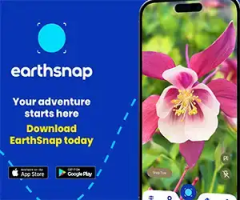
Dec 17th, 2025 - Follow Earth on Google Seven tiny grains of dust from China's Chang'e-6 Moon mission have revealed traces of an unusually fragile, CI chondrite meteorite in lunar soil. It is the first confirmed time that this specific meteorite type has been found on the Moon. The CI chondrites found on the Moon are rare, water-rich stony meteorites that carry many easily-evaporated elements. Their survival inside Moon soil suggests that ancient water-bearing asteroids once bombarded the Earth Moon system more ... [Read More]
Source: earth.com
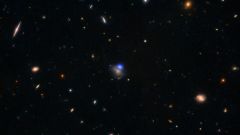
Dec 17th, 2025 - Reading time 3 minutes The cosmos is so full of mysteries that sometimes, astronomers will find answers to things you've probably never even heard of. Take, for instance, the luminous fast blue optical transients—LFBOTs for short—those weird, fading flashes of blue and ultraviolet light whose source has long eluded astronomers. Well, astronomers may finally have an answer. LFBOTs are relatively rare events. They're so bright that they're visible over hundreds of millions to billions ... [Read More]
Source: gizmodo.com

Dec 17th, 2025 - CAPE CANAVERAL, Fla. (AP) — Saturn's giant moon Titan may not have a vast underground ocean after all. Titan instead may hold deep layers of ice and slush more akin to Earth's polar seas, with pockets of melted water where life could possibly survive and even thrive, scientists reported Wednesday. The team led by researchers at NASA's Jet Propulsion Laboratory challenged the decade-long assumption of a buried global ocean at Titan after taking a fresh look at observations made years ago ... [Read More]
Source: apnews.com

Dec 17th, 2025 - Follow Earth on Google Einstein said a spinning mass should twist spacetime around it. For more than a century, that idea remained frustratingly hard to catch in the wild. Now, astronomers watching a star being ripped apart by a supermassive black hole have spotted a repeating wobble in both X-rays and radio light. The synchronized motion points to spacetime itself being dragged into a slow, predictable swirl. By following the debris disk and a powerful jet over time, researchers from the ... [Read More]
Source: earth.com